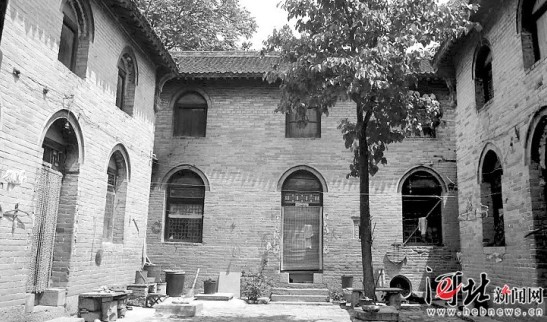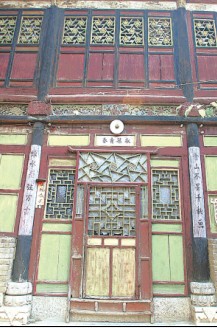A team of technicians from the Hebei Bureau of Surveying and Mapping arrived at the historic and culturally-rich Liujiazhai village in Hebei province on a mission to prepare for an upcoming protection project.
 |
|
A courtyard of Liujiazhai village. The houses were built by stone bricks, sticks and earth. |
Settled in the center of Piancheng town of Shexian county, Handan municipality, Liujiazhai fortress can be traced back to the late Song Dynasty (late 12 century). The main body of the village, which consists of 80 percent of the existing buildings, was constructed late in the Qing Dynasty and the period of Republic of China and is mixed with more modern residences.
A 10-meter-high enclosing stone wall circles the village with three gate towers on the east, north and south, making it a formidable stronghold and very rarely seen stockade village in North China. The inner buildings boast fine architectural techniques and feature ancient Chinese characters and western arts symbols.
 |
|
The ancient Chinese two-layer building in Liujiazhai village is beautifully colored and delicately designed. |
Some of the buildings were damaged and torn down after becoming casualties of war during the Yuan, Ming, and Qing dynasties and modern China.
To keep them from further damage, Shexian county officials put all 38 courtyard residence buildings -- totaling 5,000 square meters -- under special protection.
Any alteration of the buildings, wells and ponds is prohibited. Four-wheeled vehicles are prohibited from driving on the roads. The rundown houses will be repaired; collapsed but valuable homes will be restored, and the less attractive new houses will be removed. Builders are prohibited from constructing new homes as far as 100 meters around the village.
In addition, locals handed over the protection plan to authorities. They want to protect cultural practices including the traditional festival of Shehuo, sacrifice rites, folk traditions and traditional handicrafts such as shadow puppetry.
By Guo Changdong and Zhang Nan |